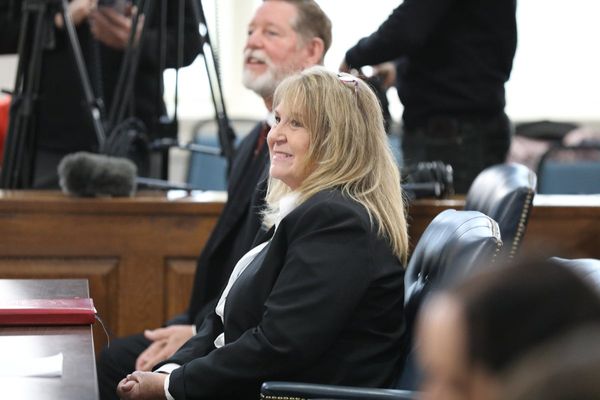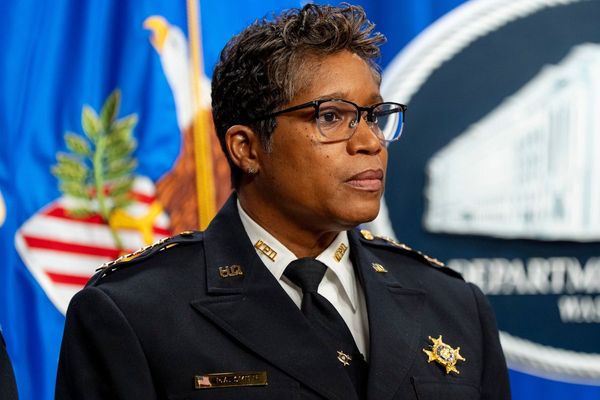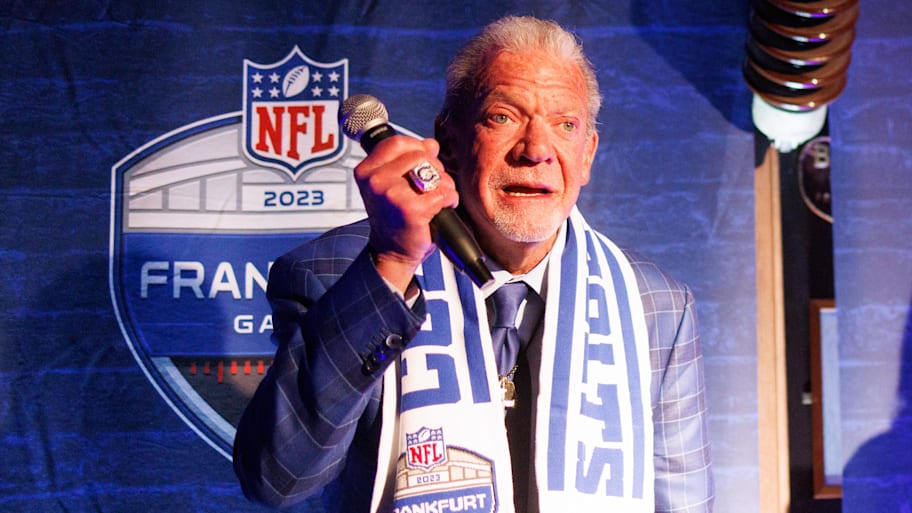
As we hit the final weeks of the NFL’s offseason program, this week’s takeaways bring a pretty nice variety of things to digest …
Remembering Jim Irsay
Jim Irsay will be missed. The more I’ve thought about Wednesday’s passing of the Indianapolis Colts’ owner, at 65 years old, the more I think his greatest accomplishment may be one few have talked about over the past few days: He changed the perception of his last name.
And that’s something that came up right away as Colts COO Pete Ward and I talked Saturday.
There is probably no one with a better perspective on Irsay, outside his own family, than Ward. Ward first joined the Colts as a public relations intern in Baltimore in 1981, and he was hired full-time after graduating from Virginia in the summer of ’82. Going to training camp that summer, ready for his role as the team’s new administrative assistant, he was surprised to find out he’d be sharing an office with owner Bob Irsay’s son, who had also just gotten out of college after playing football at SMU.
Ward was on the business side, young Jim was on the football side, so they didn’t interact much early on. But, quickly, he could see one concern he had would be completely unfounded.
“I’m a nobody,” Ward recalls. “Knowing what his dad was like, I had my anxieties, sharing my office with the owner’s son. It turned out to be so opposite of what my fears were at the time. He was friendly, genuine. I had to retrieve his car, move his car early in training camp. He had an Elvis Costello tape in the cassette. I said, Wow, must be a good dude.”
There wound up being little doubt about that.
Now, as for what Ward referenced—Bob Irsay’s reputation back then couldn’t have been worse. Best known for moving Baltimore’s beloved NFL team in the dead of night on a fleet of Mayflower trucks, the elder Irsay was well-known for being difficult to work for, abusive and a bit of a drunk. After those trucks arrived in Indy, Ward and the younger Irsay started to bond, and Ward learned where Jim stood on all that. As they worked long days, and tried to build something from scratch, Jim let Ward in on his intentions.
“Our first few years in Indy, his dad rarely gave back to the community,” Ward says. “Jim talked about that with me and said, One day I’m going to make up for this. When he took over the franchise, he made up for it quickly.”
Back then, the younger Irsay told Ward a story he’d heard about Frank Sinatra, how the legendary musician would go through the newspaper with his assistant, to try to see who needed help—and then would endeavor to find those people and get them the help they needed. In many ways, it became a blueprint for the stories about Irsay the public never heard.
One Ward talked about happened 15 years or so ago. The Colts got a letter from a man who was caretaker to his elderly father and had just lost his job. He was desperate for help. Irsay asked Ward to check out the situation and make sure it was real. Ward did, and it was.
The next thing Ward knew, another letter landed on his desk. It was from the man, writing that Irsay had saved his life and rescued him from being homeless.
Those occurrences weren’t rare, and they keep coming. The other day, Ward received an email from a father who was celebrating his daughter’s high school graduation. Irsay found out what they were there for, went over and gave her enough money to get a “nice start” on independent life.
After Ward and I talked, he sent me another text that had just come in. It was from a woman whose son had suffered a traumatic brain injury playing football at 11 years old, and was in a coma for two weeks. Irsay heard about it, and quietly sent the family $20,000—“no camera crews or newspaper articles,” per the text. The kid, still struggling to carry on simple conversations, teared up when he was told of Irsay’s passing.
Now, yes, there is football stuff to discuss here. I texted with a few guys he hired, and some he subsequently fired, over the past few days who were still gathering their thoughts on Irsay’s passing. One said he’ll always remember that Irsay would say, “Good is the enemy of great,” which colored many of the decisions he made as owner. Another mentioned his love of the game, and how he’d say, “If we take care of the game, the rest will take care of itself.”
Maybe the best example of that came with how three years ago, when other owners were scurrying for back exits to avoid being asked about embattled Washington owner Dan Snyder, perhaps afraid of people digging into their own pasts, Irsay stood tall in front of everyone, owning his own demons and saying there was no place for Snyder in the NFL.
Which is where, ultimately, you can tie the football and personal sides of Irsay together. For all of his problems, there was a foundation beneath how he gave to his family, his football team, his friends and even people he didn’t know—one perhaps built on seeing, as a kid, how not to do it.
“What a big heart he had,” Ward says. “He admittedly struggled with his demons. He grew up in an abusive household. I think he compensated with his generosity and his sympathy and empathy for people that needed help. I’ve gotten so many communications, voicemails, texts, from people just sharing stories of his generosity that no one ever knew about, and I didn’t know about.
“He’s more remarkable than even I thought he was, and I thought he was a remarkable guy. Certainly eccentric, hilarious, passionate about his team, passionate about his players and his coaches and the people who worked for him. Just a real unicorn.”
Here’s hoping those who loved him can find peace in these memories.
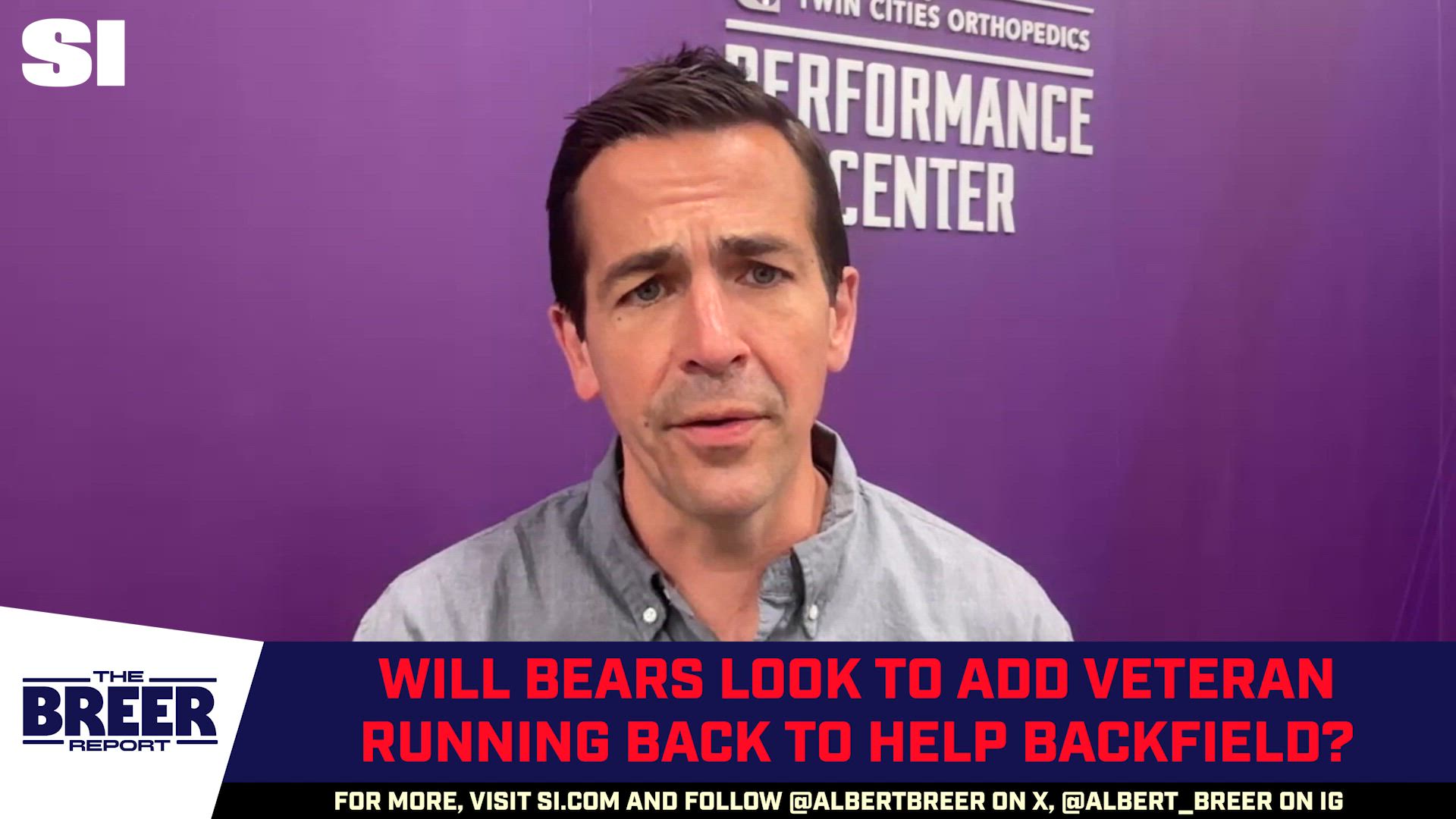
Caleb Williams
Chicago Bears QB Caleb Williams has gotten a lot of attention for being out on the team’s old regime, but every indication over the past four months has been that he’s in on the new one. And I’d say that with this very important caveat: It’s pretty easy for a quarterback to buy in on a first-year coach with an offensive background who was hired, at least in part, to get his own career off the ground. No one’s lost a game. Or thrown a pick. Or had a plan come undone.
That said, from Day 1, Williams’s buy-in on Ben Johnson has been high.
The 23-year-old was there, alongside DJ Moore and Rome Odunze, for the introductory press conference, which is a small, but notable, thing for a guy to do coming off his rookie year. That, in turn, gave the two their first chance to sit down and talk face-to-face. And it also showed that Williams had an understanding of the responsibility that would come with his place as the Bears’ franchise quarterback, which would be Johnson’s starting point anyway.
Williams was around the building a lot from that point forward, which gave Johnson, offensive coordinator Declan Doyle and QBs coach J.T. Barrett a shot to organically build their relationship. That facilitated some hard truths to be doled out at the start of the offseason program in April.
There were two areas where the coaches wanted improvement from Williams. Both related to how he carried himself as the quarterback, based on what the 2024 season showed. One was body language. The other was presnap procedure.
On the former, while the coaches understood the beating he took, they showed film to emphasize how he’d been slow to pull himself up off the ground. It was a long year. People got fired in-season. And in adverse circumstances, the staff explained, having a quarterback who was rolling with the punches would go a long way. On the latter, there was a smattering of small things—like on the first play of one game, he turned to his left, thinking the motion was coming, when it was actually coming from the right—that needed to be cleaned up.
To Williams’s credit, he welcomed every piece of criticism in an effort to get better. Which allowed the staff to move quickly to a lot of Lions tape, to give Williams an idea of what Johnson would be bringing from Detroit with him, and Matthew Stafford film, to bring some visuals to what they’d try to work him toward technique and fundamentals-wise.
Progress, thus far, has been steady, and Williams is working at it. The Bears adding Case Keenum to the quarterback room was, indeed, intentional, and Williams has taken advantage of it, in using Keenum almost as another coach after hours (to work around the CBA-mandated limits on what the coaches can actually do with the players at this point in the calendar). And, on the field, Williams has been good for at least one “did he really do that?” throw every day.
So, at this point, it’s fair to say things are as good as they could be.
Which, to be sure, is better than they were five or six months ago.
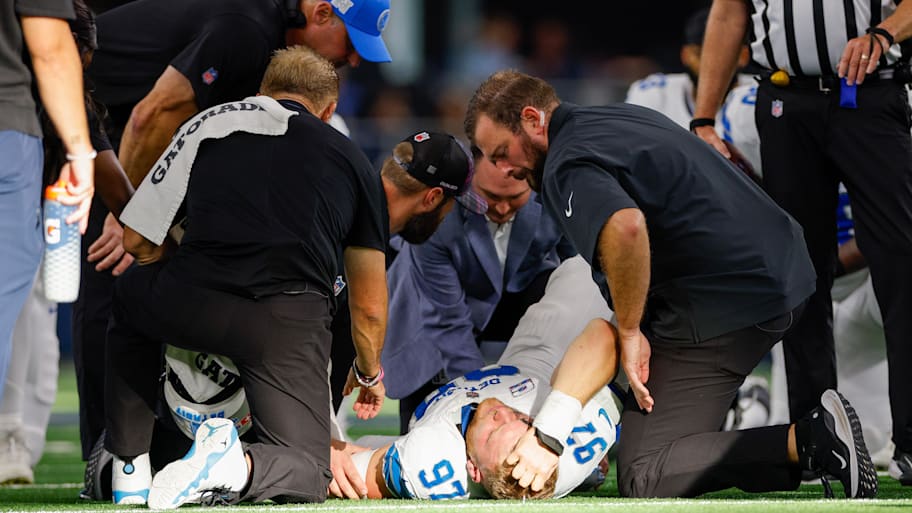
Aidan Hutchinson
I think Aidan Hutchinson’s road back shows the Lions will be making a safe investment, whenever they decide to make him their $40 million (or so) per year man. Last week, Detroit’s hometown hero was fully cleared for football activity ahead of this week’s start to OTAs. He’s now roughly seven months separated from the ugly injury he suffered at AT&T Stadium against the Dallas Cowboys, so that his broken leg is healed is great news.
And you can start here by acknowledging there was some good luck involved. That the injury happened a short drive from the Baylor Medical Center, which has a Level 1 trauma center, and one of the foremost surgeons for this type of operation, Dr. Alan Jones, was on site was an absolute godsend for Hutchinson. Also, as part of the break, he had no ligament, artery or nerve damage, which simplified the surgery and rehab.
Whether he’d have made it back for the Super Bowl thanks to these fortuitous circumstances is a question that may never be answered. But that he didn’t have to try may wind up being a blessing.
And the care he’s taken before and since the Lions’ playoff ouster says plenty about who Hutchinson is, and also what the franchise he’s played for has begun.
Two examples that I got over the weekend were good ones, and reflect the work he’s done with Detroit director of player health and performance Brett Fischer—whom the Lions poached from the Arizona Cardinals two years ago.
First, there was some concern over this being the second bad bone break that Hutchinson has had over the past five years. The first was a fractured right ankle in 2020, an injury that ended his junior season at Michigan. The second was, of course, the broken tibia and fibula suffered in Arlington in October. So Fischer had a bone density test run for Hutchinson, to try to make sure he had as much information as possible for the rehab (it looked like the breaks weren’t related to each other through any sort of predisposition Hutchinson had).
Second, there was blood work that Fischer recommended, which helped guide Hutchinson in how he should eat as he came back from the injury—another sign that no detail was too small in trying to give Hutchinson a shot at playing in the Super Bowl or, failing that, being as ready as possible once the page was finally turned to the 2025 season.
That’s not to say there weren’t down moments. The beginning of the rehab was tough. And while it helped that Hutchinson does live near where he grew up, and had his dad, a surgeon himself, close by, getting through those early days while his team kept chasing a championship wore on him. But it was surprising to no one how, once he got back around the team, he was determined to find his way back to the field.
Based on how aggressively the Lions moved to re-sign fellow top-10 pick Penei Sewell, just as he became eligible for a big second contract last year, it wouldn’t be a surprise to anyone if talks move quickly between now and camp on Hutchinson.
They certainly have plenty of reason to believe that would be a good idea.
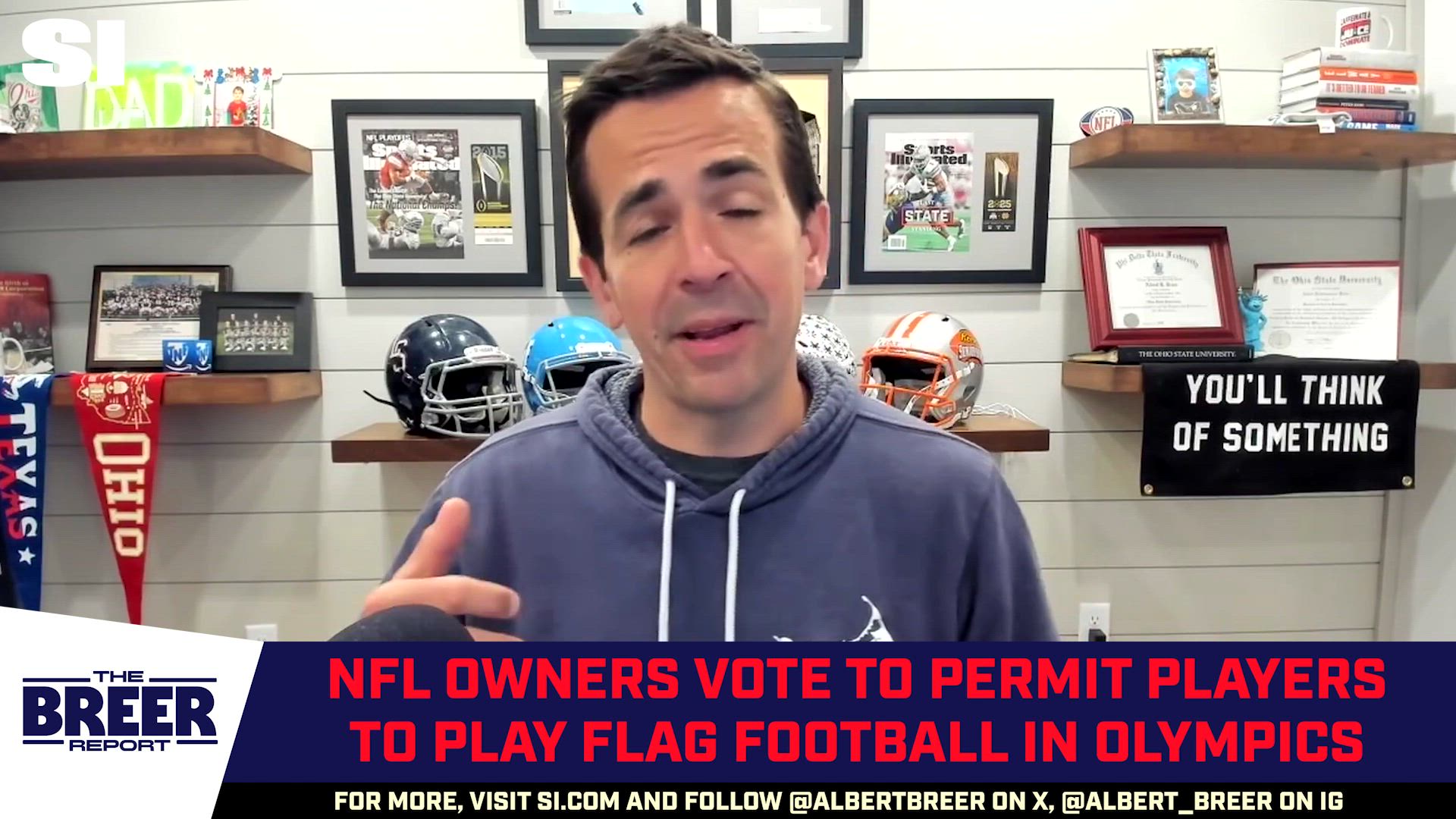
Flag football
The NFL’s flag football obsession is simpler than people are making it out to be. I’ve said it before, and I’ll say it again here—football’s a tough game to export. The equipment’s expensive. The insurance, too. The game is violent. It takes 22 people to play a single snap of the real version of it. The tactics behind it are complex, and the realities of playing the game at any level are pretty different than a kid’s perception of what the sport is.
By comparison, to take basketball or soccer to a foreign country, all you need is a bag of balls and a goal or a hoop. And those sports can be easily explained to an 8-year-old.
“It’s undeniable that flag for girls and boys, women and men, is the scalable opportunity to grow the game around the world,” NFL EVP of club business and league events Peter O’Reilly told me, after the meetings. “Doing that, not just the aspirational Olympic piece of it, but at the grassroots youth level, yes. Obviously, we’re very focused with academies and the tackle level, identifying talent around the world.
“But in terms of the top of the funnel, broadest reach, getting a football in a young girl or boy’s hands, this is that model where there’s low cost, low barrier to entry, patch of grass, with a ball and belts and some cones. And that’s what we’re seeing, where the investment is starting to come in. Germany, we went there, first time in a big way a few years ago. Now others are carrying our water, they’re investing in flag in schools.
“We’re starting to see the same thing in Australia, where it’s growing rapidly, which is where the next Olympics is [2032 after Los Angeles in ’28]. So very core to the strategy is that scalable piece, both participation and, same thing as in this country, you become a fan once you’re running around and playing the game.”
Which, to me, is why you’ll probably see the league following up in some sort of strong way to last week’s measure allowing NFL players to play in the 2028 Los Angeles Games. Maybe it’ll incentivize guys to participate. The league will certainly do things to encourage teams to sign off on their players playing.
Regardless of how they make all of that work, this effort is very much just getting started.
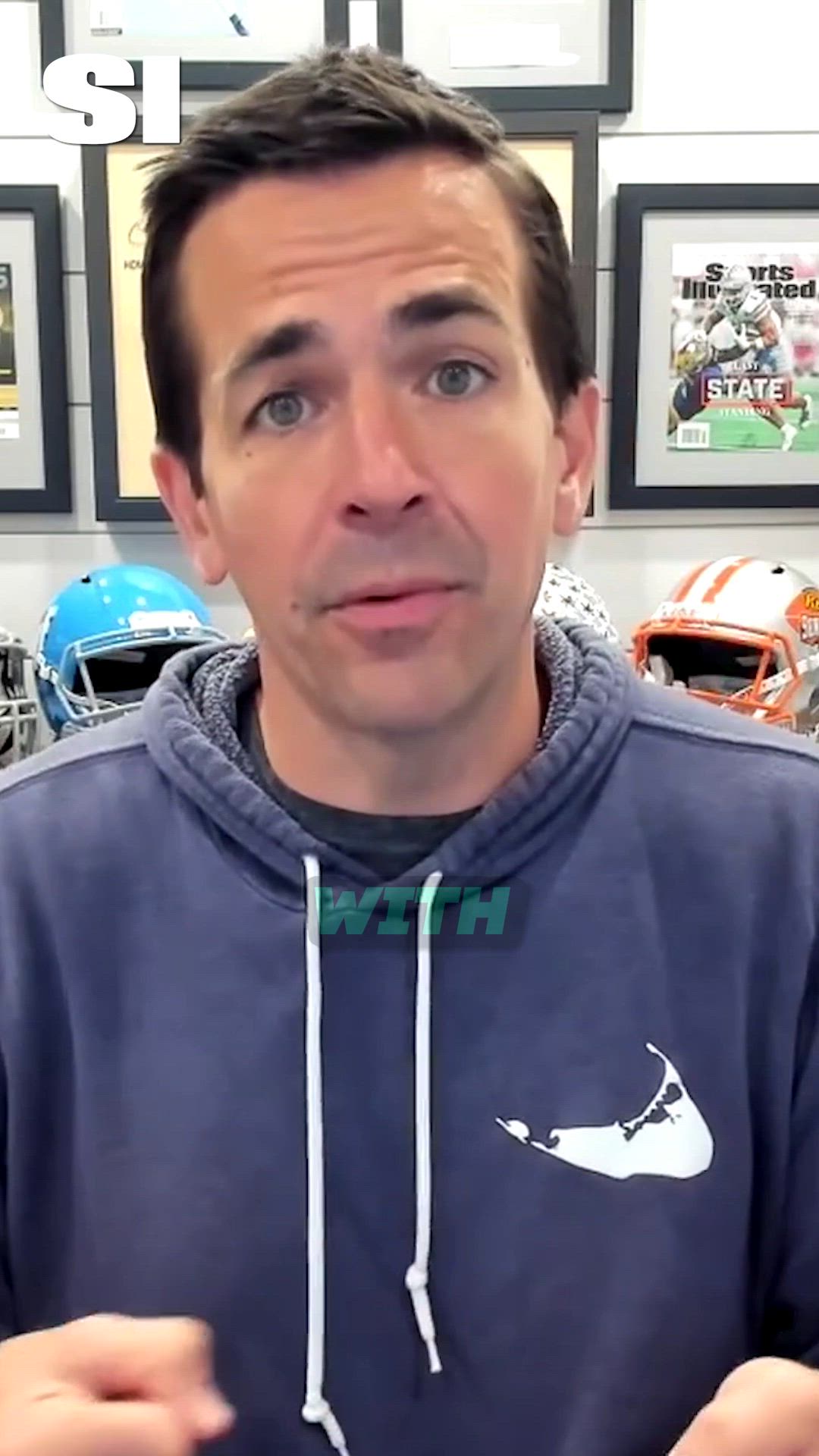
Tush push
The next steps for the tush push are impossible to predict. That’s because the next time it’s up for any change will be 285 games from now—272 in the regular season and another 13 in the playoffs. A lot can happen over the course of those 17,100 minutes (plus any overtime) of football.
Maybe teams will solve the Philadelphia Eagles’ riddle, and this will be a non-issue in 2026. Maybe there’ll be a bad injury (I certainly hope not) that swings the pendulum. Either way, that can’t be forecast.
So that leaves us with what we do know, and that, quite simply, is that this topic got to the point where it got overdiscussed, overcomplicated and, in the end, personal. The Eagles felt wronged, for sure, based on the passionate speeches made in the room in March and last week by owner Jeffrey Lurie, GM Howie Roseman and legend Jason Kelce, and in one final plea on Wednesday in Minnesota from assistant GM Jon Ferrari.
Ferrari wound up being the one that owners Jerry Jones, Terry Pegula and Jed York put on the witness stand. Jones and Pegula scrutinized his point of view. York, eventually, spoke for the rest of the room in asking for a bourbon and if “we can vote already.” Because the reality was, by then, everyone was worn out in general by the subject. (That’s also when Goodell, leery of information from the conversation leaking out of the room in real time, kicked everyone but the owners out.)
The league’s argument against the play related to health and safety—not an injury that has happened, but one that could. Teams opposing it argued it looked too much like a rugby play (the Eagles’ resident actual rugby player, Jordan Mailata, disagreed). At first, the Green Bay Packers’ proposal, pushed by the legal team, was narrow and focused on Philly’s tactic. The revised version included all pushing and pulling.
And over time, if all that moved some teams to the league’s side, it alternately pushed others—either smelling a rat in the moving of goal posts, or leery that their efforts would be legislated out of the game by the broader proposal—away from banning the play.
Which leaves everyone in a place to take a breath, give this some time, and see what the 2025 season brings on the topic.
Whether that changes things between now and March 2026 is anyone’s guess.
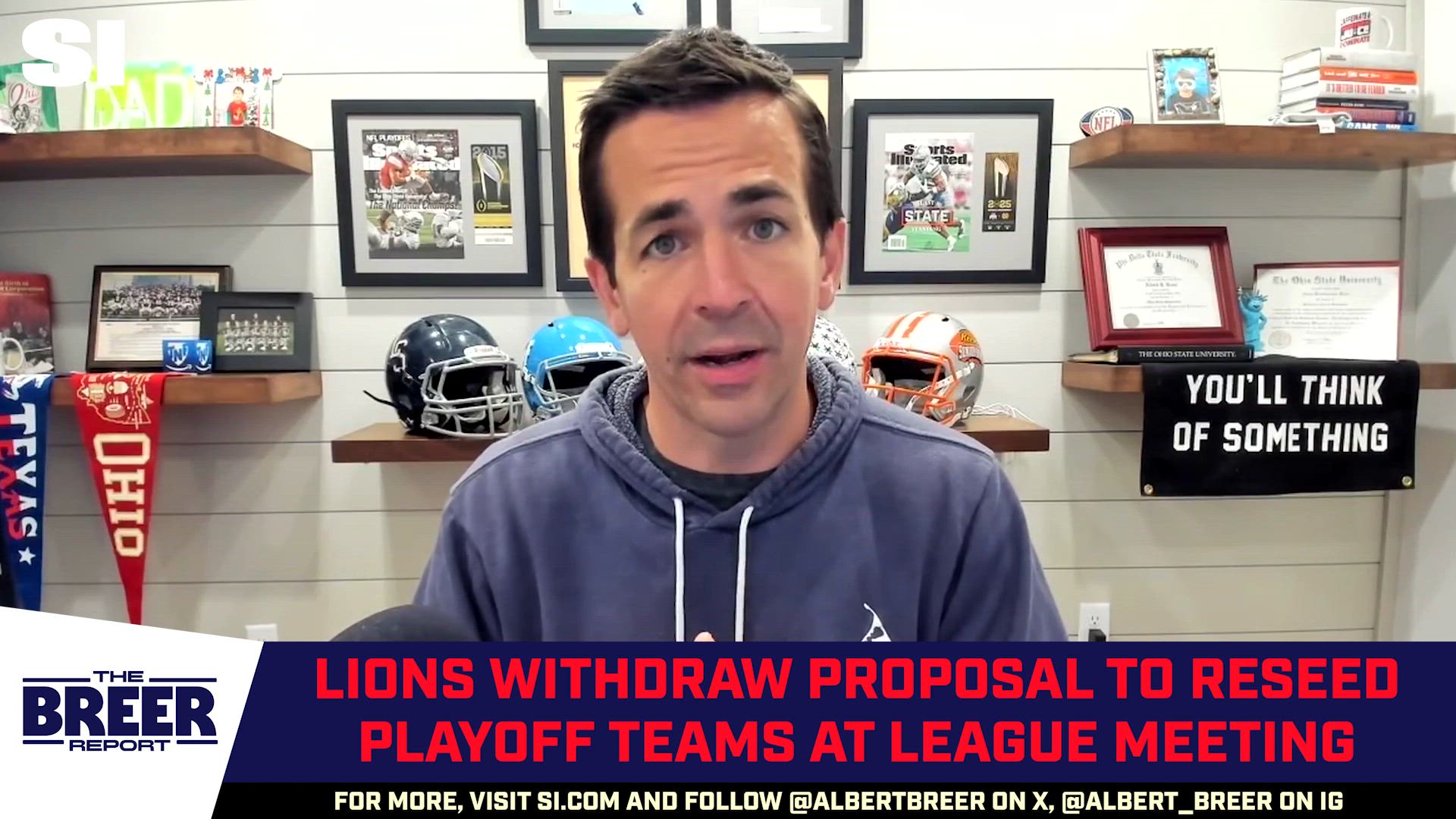
Playoff seeding
The Detroit playoff proposal is going to be the subject of a continued conversation, as we mentioned in our Wednesday meetings wrap up. Since writing that, I did get a chance to take a deeper look at the NFL’s presentation on a potential change, which very much showed the league’s reasoning on backing the idea.
It’s in the best interest of business, first and foremost, in protecting the regular season.
There were four reasons given along those lines. First was “less resting of starters,” with the presentation pointing out that seven of 14 playoff teams rested their starting quarterbacks in Week 18 last year, and six won in Round 1 (with the one loss coming to another team that rested its QB). Second was “game quality,” stating that games with starters sitting “feature less scoring, fewer lead changes, fewer big plays, and more sacks.” Third was “better for broadcast,” claiming that starters resting “limited games that can be played in prime-time windows, and the NFL runs the risk of not having enough stand-alone games.” Fourth was “better fan and [viewer] experience,” saying these games have “decreased viewership/lower ticket sales.”
On another slide, the NFL used the example from Major League Baseball, which uses the same format (division champions guaranteed top seeds). Because of the format, the San Francisco Giants and Los Angeles Dodgers, the two best teams in baseball, played in the Division Series in 2021 and set records for viewership. But MLB got just five games of that, rather than seven, and the Dodgers were knocked out in the NLCS, and MLB wound up having its second-lowest ratings ever for a World Series.
So what’s obvious here is that the priority is being placed on ratings and fan interest over having a fair and equitable system—which I get, because this is a business.
But it also brings me back to what Los Angeles Rams COO Kevin Demoff said in addressing the room Wednesday, raising the associated concern. “What are we trying to accomplish here?” he asked. “Fairness? Or better competition at the end of the season?”
So the challenge now for the league would be to achieve both. I don’t think teams resting players has been that big a problem for the NFL. To me, it can actually boost the quality of play in the playoffs, and it’s good for the health of the players (and increasingly so as the NFL pushes for an 18-game schedule), and there’s usually plenty to chew on over those final weekends.
But I’m not looking at the 272 games as pieces of real estate that I have to sell to broadcast partners like the league office and a lot of owners are.
And if that’s the priority, and I believe it is, there’ll be some change coming. What’s next, to me, is where the NFL can creatively come up with ways to make it fair in a league where schedules vary wildly from division to division. Maybe that’s through reimagining a scheduling formula that’s worked really well. Maybe it’s through rethinking the divisional format.
All of it, I think, will be on the table going forward.
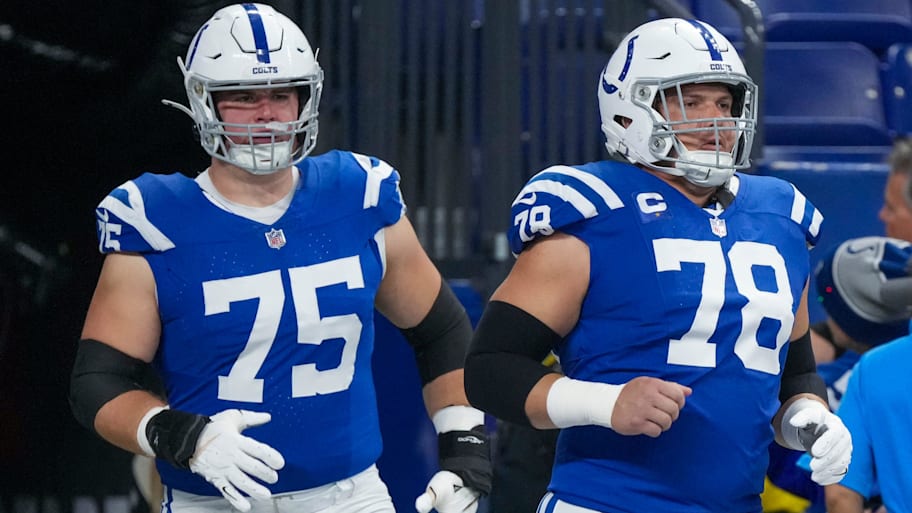
Minnesota Vikings
The Minnesota Vikings’ offensive line is an underrated storyline to watch. Maybe I’m bringing this up because I saw Ryan Kelly hanging out at the Omni Viking Lakes Hotel where the NFL meetings were being held (rookies and new vets stay there). Maybe it’s because we were in the shadow of Minnesota’s college-campus-like headquarters.
Either way, the Vikings moved mountains this offseason to fix what ended their 2024 season, and I think it’s worth taking a harder look at.
While some folks used the team’s 27–9 ouster at the hands of the Rams as an indictment of Sam Darnold, the Vikings saw it more as a sign of how much work was ahead in fixing what was in front of the quarterback. Darnold was sacked nine times that night, a week after being knocked around by a depleted Lions front in Week 18.
As such, three of the team’s five starting linemen from that night are already gone, and a fourth, Blake Brandel, is unlikely to start in 2025, leaving only right tackle Brian O’Neill as the lone projected returning starter. The investment in a revamped line has been heavy:
• Will Fries signed a five-year, $87.72 million deal with $34 million fully guaranteed to displace Dalton Risner at right guard. Risner is still a free agent.
• Kelly got a two-year, $18 million deal to come with Fries from Indy, and make the Vikings bigger and stronger at center. He replaces Garrett Bradbury, who got a two-year, $9.5 million deal from the New England Patriots.
• The Vikings then drafted Donovan Jackson in the first round to play left guard. Brandel, who signed an economical extension to stay with Minnesota in 2024, is the incumbent.
Add to that the top-of-market deals done for O’Neill and left tackle Christian Darrisaw—who is coming back from a torn ACL, and had in-season addition Cam Robinson in his place at the end of last year—and you can see all that Minnesota has done not just to fix an issue it had in the playoffs, but turn it into a legitimate team strength. Maybe that was best illustrated via the decision to take Jackson at pick No. 24 after paying Kelly and Fries.
All this, of course, should give J.J. McCarthy a great shot to succeed in his first year starting.
And if it works, it’ll probably accomplish a lot more than that.
Buccaneers and Chiefs
The front office promotions in Tampa Bay and Kansas City were well-deserved, and also give you a little window into where the NFL is going.
Earlier in the month, the Tampa Bay Buccaneers promoted Rob McCartney to assistant GM and Mike Biehl to VP of player personnel in the wake of losing assistant GM John Spytek to the Las Vegas Raiders. Likewise, with the Tennessee Titans poaching their assistant GM, Mike Borgonzi, the Kansas City Chiefs promoted Mike Bradway and Chris Shea to assistant GM spots, Ryne Nutt and Tim Terry to VP of player personnel roles, and Marc Richards to director of football research and development.
Those teams have won consistently, so promoting from within always made sense. But there’s a nuance in how both teams are now set up that deserves attention.
The Buccaneers were actually already there, having Spytek and cap chief Mike Greenberg as co-assistant GMs—moving McCartney up simply maintained their structure. The Chiefs, on the other hand, moved toward that, replacing Borgonzi, who was GM Brett Veach’s right-hand man on just about everything, with two guys.
The reality? GM jobs are getting awfully big, and so there are a couple of ways that you can divide the workload.
What the Chiefs and Bucs have done is one version of it, where you have an over-the-top GM (Veach in K.C., Jason Licht in Tampa), and two assistant GMs—one leading the scouting department, the other basically overseeing everything else—reporting to him. The other would be where you divide the duties of the old GM, commit the GM to leading the personnel department and then have another exec overseeing the cap, analytics and other operations elements of the teams (the Lions, Rams and Carolina Panthers are set up that way).
Both, you can clearly see, can be effective. But what seems non-negotiable now is having that sort of infrastructure in place.
The Eagles were one of the first teams to set things up this way, having done so with Joe Douglas and Andrew Berry working under Howie Roseman in 2019. And it’s proving now to be one more area where they were ahead of the curve.
Aaron Rodgers
I still believe the Pittsburgh Steelers are on track to sign Aaron Rodgers. This isn’t so much an update, more just keeping everyone apprised that nothing has changed. Pittsburgh still is under the impression that Rodgers intends to sign there. Rodgers has been traveling, and working through the personal stuff he cited as his reason for being noncommittal, when he appeared on The Pat McAfee Show last month. So my bet is this will still get done.
I’d also reiterate that I do think part of the reason for Rodgers waiting to sign is that he wants to be all in when he does put pen to paper.
If he had signed in early April, and then handled his personal matters, with a promise to come in after those were taken care of, the pressure would have been up on everyone. At each checkpoint in the calendar, Steelers players and coaches would have to answer questions on his absence. Those questions would hover over Rodgers himself, too.
And I have heard that the way everything was handled with his absence from New York Jets minicamp last year did leave a mark. So avoiding that sort of national debate happening over whether he’s on a practice field would make some sense if you were Rodgers.
That said, I do think the Steelers’ mandatory minicamp would be an important time for the team to have Rodgers. That, in case you’re wondering, is set to start in two weeks.
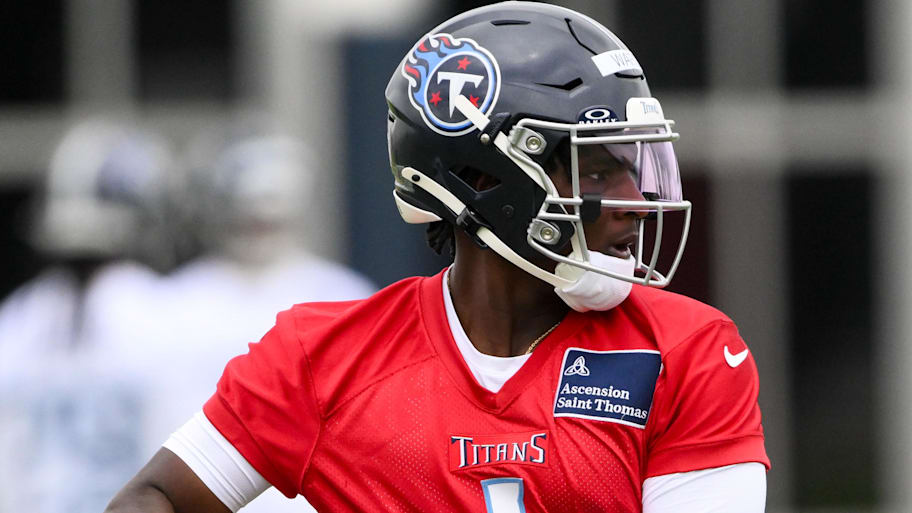
Quick-hitters
Most of the NFL starts OTAs this week. And we’ve got your quick-hitters to get you going for that “excitement.” Let’s roll …
• It really is amazing how rookies signing their contracts barely makes news these days. No. 1 pick Cam Ward signed his last week, and I’m still not sure anyone noticed.
• That said, not great optics for the Cincinnati Bengals that their first-round pick, Shemar Stewart, is staying off the practice field because of a dispute over contract language, with Trey Hendrickson’s years-long contract issue still ongoing.
• The San Francisco 49ers are in the midst of retooling their cap, but that doesn’t mean they’re any less invested in 2025. I’m told, after doing new deals for Brock Purdy, George Kittle and Fred Warner, San Francisco is again set to be close to the top of the league in cash going out the door for the year.
• I love watching teams’ in-house draft videos. You can learn stuff, for sure, and the Rams’ one brought an interesting nugget. Before trading up for Jarquez Hunter in the fourth round, Rams GM Les Snead leaned over to Sean McVay and said, “I’m a huge fan of Hunter, favorite running back.” McVay responded, “There’s no question that’s who I want.”
• Key line from Browns coach Kevin Stefanski, to ESPN Cleveland, on quarterback reps in the spring: “We want to give everybody enough reps where we can learn more about them.” That’ll inform them, I think, on who’s capable of winning the job in the summer and maybe help narrow the competition before then.
• Jim Nantz is absolutely correct. Chiefs-Cowboys on Thanksgiving will break viewership records, provided neither team is way worse than we expect. And that’s by design for the NFL, in building a schedule where they’re trying to pair strength in broadcast window with strength in game matchup, something that can be seen right from the start with the Philly-Dallas opener.
• I’ll be interested to see Javonte Williams in Dallas. Folks in Denver thought the world of him before a catastrophic knee injury in 2022. He said last week he finally feels like himself again. And opportunity should be there with the Cowboys for a back who was once compared, at least stylistically, to Marshawn Lynch.
• It is a little hard to swallow NFL execs saying that the third Saturday in December is an “NFL day” in justifying not working with the CFP to create a better viewer experience for everyone on a day that should be a celebration of the sport. Especially after the league’s hostile takeover of Christmas, previously, to borrow their phrasing, an “NBA day.”
• I don’t blame the New York Giants for not being really pleased that another season of Hard Knocks, this one the NFC East in-season version set for this fall, is being thrown on their plates. I feel they earned a break from that, but that obviously isn’t up to me (or the Giants).
• Finally, our thoughts are with all our veterans today, and every day. I know Memorial Day is a different holiday for them—former Army Ranger and Seattle Seahawk Nate Boyer explained to me years ago (I’d highly recommend you read that here; scroll down). So my very best to our soldiers, both those I know, and don’t.
This article was originally published on www.si.com as NFL Takeaways: Jim Irsay’s Greatest Accomplishment.

